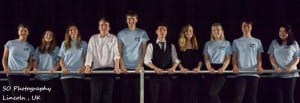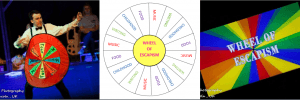Fragment Theatre Company was a new and exciting experience that tested and proved to be much more than I originally thought it could ever be. Though I set out with the idea of creating a piece of theatre with a group of friends, it developed into something beyond just purely rehearsals and performance. Though the rehearsal process wasn’t always as smooth as we had all initially anticipated, the creative differences we had as a group ultimately shaped the piece we created and encouraged us to produce something better than we thought we could.
Alexander Kelly, the co-artistic director of the theatre company Third Angel states that when setting up a theatre company the atmosphere and the member’s attitude has to have an element of fun. Though, keeping professional, he suggests ‘don’t let things get to you too much – build a good support team around you and give them responsibilities’ (Kelly, 2013). I feel Fragment has been a journey of learning for many of the members, not just a journey of learning new skills in how to set up a theatre company, but long lasting skills such as the power of social media, ways of getting involved in the community and cohesively working in groups in a professional and sociable manner.
Though our final performance had glitches, as most theatre companies experience on show day, the response from the audience encouraged us during the show and helped each actor bounce off the energy given resulting in the best version of Exit This Way we had done.
Going forward with Fragment Theatre Company, I feel there are many more ideas and concepts that could be created. However, if we were to tour with ‘Exit This Way’ or any other shows, we would have to evaluate the large set and amount of props that we used, as these would not be viable to tour with for quick get ins and get outs. However I believe with slight adjustments to the script and our aesthetic we would be able to keep creating thought-provoking metaphysical theatre appropriate for vast amounts of audience members.
Fragment Theatre Company, from the start to the end.
(Chattaway, 2017)
Works Cited:
Chattaway, A. (2017)
Kelly, A. (2013) The Guardian, 28 August. Available from https://www.theguardian.com/culture-professionals-network/culture-professionals-blog/2013/aug/28/expert-tips-setting-up-theatre-company [Accessed on 23rd May 2017].

 Initial designs of our set designed using TinkerCad software.
Initial designs of our set designed using TinkerCad software. Final designs of our set after developments exploring metatheatre
Final designs of our set after developments exploring metatheatre







